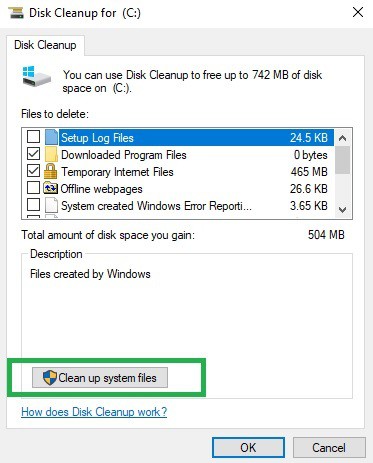- Right click the Windows task bar and select Task Manager. Click on the Processes tab. Sort the processes by Memory and look for programs at the top of the list that you don’t recognize. If you spot any problem applications, go into the Control Panel, click on Programs and Features, and uninstall those problem applications.
- The best way to clear your memory is by restarting your computer. Check your Task Manager The best way to clear your memory is by making sure that no application is consuming your entire RAM memory. You don’t need to guess which app is using your RAM.
- Clean up Windows 10 – Enable Storage Sense on Your PC Open the Settings app on your PC and click on System followed by Storage. You will find a toggle under the Storage sense section. Simply turn the toggle to the ON position and the feature will be enabled on your PC.
- This is on Windows 10 pro, 2004, with 40Gb ram and a 5Gb page file (which did not get used at all). So Windows did not keep hold of the memory used by the apps I ran or from the files I opened except for a small amount added to standby which I assume relates to caching the apps I started and the files I opened with them.
Windows 10 2004, 20H2, and 21H1 will get 'news and interests' feature Microsoft has released a new preview build for the next version of Windows 10, known as version 21H1 and expected to ship.
Windows 10 virtual memory
Windows 10 is at its finest state where you can blindly install it hoping for the best Windows operating system yet. If you just installed the Windows 10, you might want to learn memory management to reduce performance and lagging issues. Here let’s see how to tweak virtual memory in Windows 10 and other memory related settings to fix such issues.

How to Adjust Windows 10 virtual memory settings:
Virtual memory is more like a physical RAM which is being used when the standard RAM runs out of usable space. This might have no meaning to the newer computers which have loads of RAM built-in. But helpful to older machine or machines having not enough memory. It improves the system stability and improves performance, and the same time it saves programs from crashing when the RAM is almost full. Windows 10 also uses the Physical memory profile to handle things if were out of memory.
Windows 10 can take care of itself depending and according to your computer. To fix any performance issues and to make the system more stable you need to fix the Windows 10 virtual memory management, follow the below steps.
1. Click on the Start icon or press the Windows key, and go to the Settings.
2. Start typing ‘performance‘ and choose the appearance and performance of Windows from the results. Or you can directly search ‘Performance‘ in the start menu search bar.
3. A window will open, switch to the Advanced tab, and you’ll see a Virtual Memory section, click on the ‘change‘ button. In the same window, you can see values at the end, those are the initial, recommended and the current value of virtual memory. You need to read that.
If you see that the current Allocated value, is less than Recommended value. Uncheck the “Automatically manage paging file size for all drivers” Then, select “custom size” and make changes according to these.
- In the initial size field enter the recommended memory value (find at the bottom of the box).
- In the maximum size field enter an amount higher than recommended value. But don’t make it to higher that could not be helpful and you might experience a worse situation.
- Once you are satisfied click ok to save your new Windows 10 virtual memory settings.

If you’re not sure about how virtual memory in windows 10 can affect its performance, we suggest you to make changes and see results accordingly.
How To Clear Memory In Windows 10
More Windows 10 Tutorials and resources
